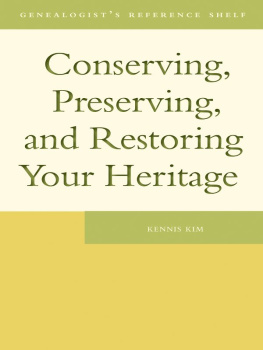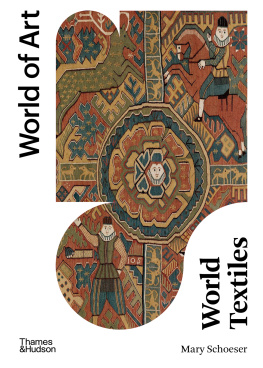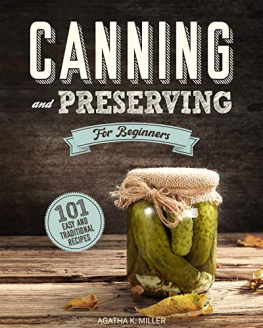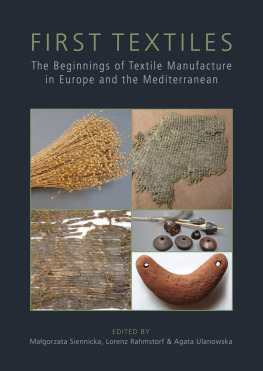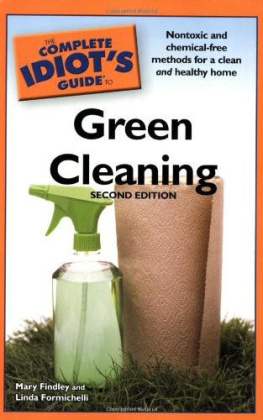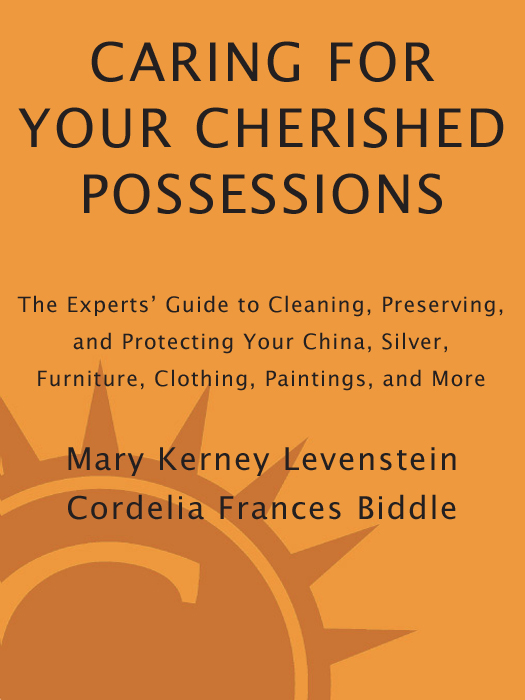All rights reserved. No part of this book may be reproduced or transmitted in any form or by any means, electronic or mechanical, including photocopying, recording, or by any information storage and retrieval system, without permission in writing from the publisher.
Published by Crown Trade Paperbacks, 201 East 50th Street, New York, New York 10022. Member of the Crown Publishing Group.
Random House, Inc. New York, Toronto, London, Sydney, Auckland.
CROWN TRADE PAPERBACKS and colophon are trademarks of Crown Publishers, Inc.
Levenstein, Mary Kerney.
Caring for your cherished possessions
The Experts Guide to Cleaning, Preserving, and Protecting Your China,
Silver, Furniture, Clothing, Paintings, and More/
Mary Kerney Levenstein, Cordelia Frances Biddle.
p. cm.
Bibliography: p.
1. House furnishingsConservation and restoration. 2. ClothingConservation and restoration. 3. House furnishingsCleaning. 4. ClothingCleaning. I. Biddle, Cordelia Frances. II. Title.
TX323.L48 1989
643dcl9 89-653
C ontents

F oreword

How many times have we wondered, What is the proper way to care for this special possession? Well, hooray, for now we have the answer to almost every such conceivable question included in this informative and highly readable book.
Did you know, for instance, that your favorite wool sweater may have acid in its makeup? Yes, acid. Well, it may, and when you store it you should do so in buffered tissue with an alkaline Ph factor.
Or that your carpets can actually become brittleas well as grow mold?
Or that certain furniture should be vacuumed instead of simply dusted?
That chemicals in ordinary tap water can damage bronze and other metal pots and vases?
Or that certain pottery shouldnt be immersed in water because it will actually swell?
That you shouldnt worry about that odd moth flying around? Why? Because the moth is not the problem; the problem is its eggs that have already been laid.
Well, I didnt, and I marvel at the research and the solutions that the authors reveal, including new products and state-of-the-art techniques to clean, restore, and preserve our treasured belongings.
This book will help you learn to take care of your fancy wedding dress and antique lace, your patchwork quilts and wicker baskets, your treasured photograph albums, your paintings, and your antique furniture, so that you will be able to enjoy the things you love for years to come.
Because it covers virtually everything we have in our homes, this is an indispensable guide for every household. Additionally and most importantly, it includes a separate chapter listing resources and experts across the country to call upon for advice.
This is a book we have all needed for many years.
C HARLOTTE F ORD
P reface

This guide is for people who own fine things and want to know how to take care of them. In looking for ways to clean, protect, and preserve the contents of our own homes, it has become clear to us that we and most people have been treating valued possessions improperly. Until now, the most current, detailed, and thoroughly reliable information has been immediately available only to conservators and restorers.
In our research we found that many factors have changed and modern technology has had to respond to atmospheric pollutants and contaminants in todays environment. Some cleaning techniques that date back several generations are still considered the best. At the same time, we learned that there are new techniques and new barrier products available to protect and preserve vulnerable art objects, furnishings, and textiles.
We found too that new evaluative processes provide us with a better approach to treatment. For example, many museums now have access to textile scanners that reveal fiber content, detect age, and identify the elements to which the fabric has been exposed.
In our effort to provide the most authoritative information on both preservation, which prevents or retards deterioration, and restoration, which reverses it, we have interviewed conservators, restorers, collectors, and master craftsmen who are experts in their fields.
We have presented their knowledge in a readily accessible fashion. We hope that as a result of our sharing this information we will enable many a thing of beauty to remain a joy forever.
L inens and
Clothing

A hundred years ago a favored remedy for scorched clothing consisted of a paste of vinegar, fullers earth, soap, onion juice, and fowls dung. This was spread on the burned garment and allowed to dry, then the garment was washed twice with the hope that it would come completely clean. Fortunately, most such old recipes have been replaced. Clothing and linens can now be treated and preserved with more knowledgeable and informed care.
To protect fine textiles, it is important, first of all, to clean and store them properly. No wedding dress, no table linens, no antique lace, no newly dry-cleaned evening dress, nothing should ever be stored in plastic. Plastic prevents air circulation. Trapped beneath it, the fabric cannot breathe, fibers begin to break down, and eventually they disintegrate. Buttons, beads, and sequins fall off as the cotton thread securing them rots. The sequins themselves discolor, and if they are made of organic material they will finally crumble.
S torage

Clothing should be hung in muslin clothing bags or under a pure cotton sheet draped over the closet rod. Position the sheet over the hangers to hang to the floor on each side. This keeps out dust, dirt, and light, but allows the movement of air and prevents dampness. Hang especially valued clothing in bags made of barrier materials such as Gore-Tex. This acid-free product is breathable, but keeps out water, dust, mold spores, bacteria, and smoke.
Leave space between clothes on the rod. Hang heavy garments, such as beaded blouses, on padded hangers, which distribute weight and stress. Mens suits require formed wooden hangers that are wide enough to support the shoulders.
Store special dresses that are very heavy or old and knits or clothing not often worn in special archival boxes. These boxes are made of acid-free material and have no pastes or oils to stain delicate materials. Before carefully folding garments, stuff them with acid-free tissue so that their shape is maintained.


